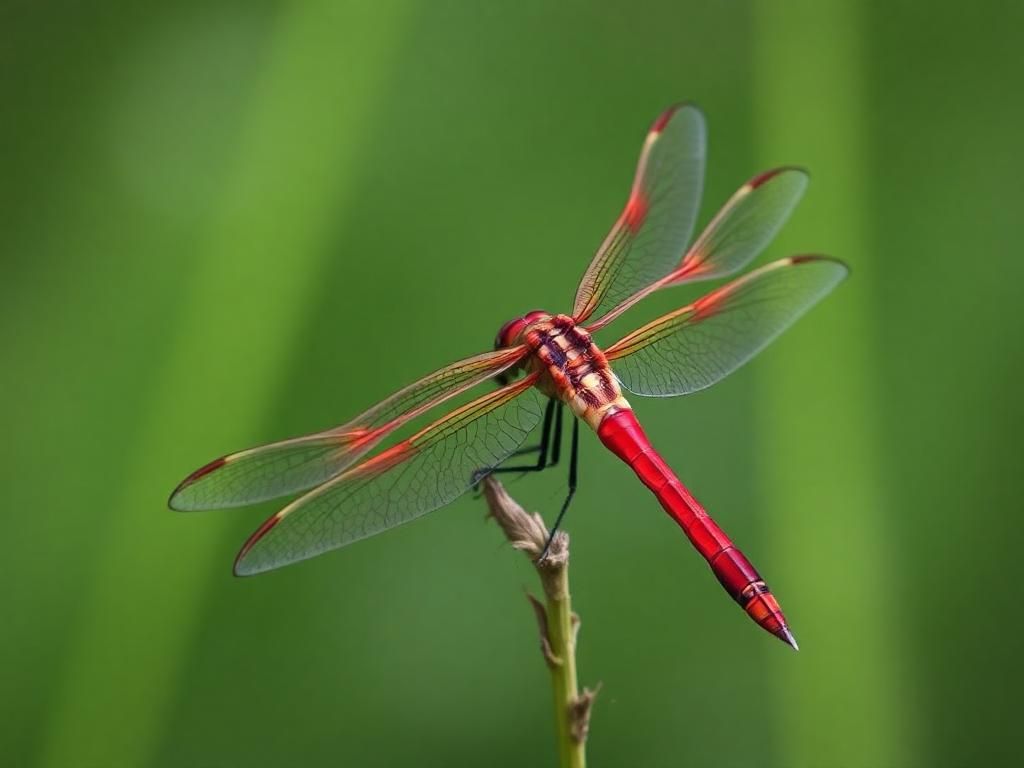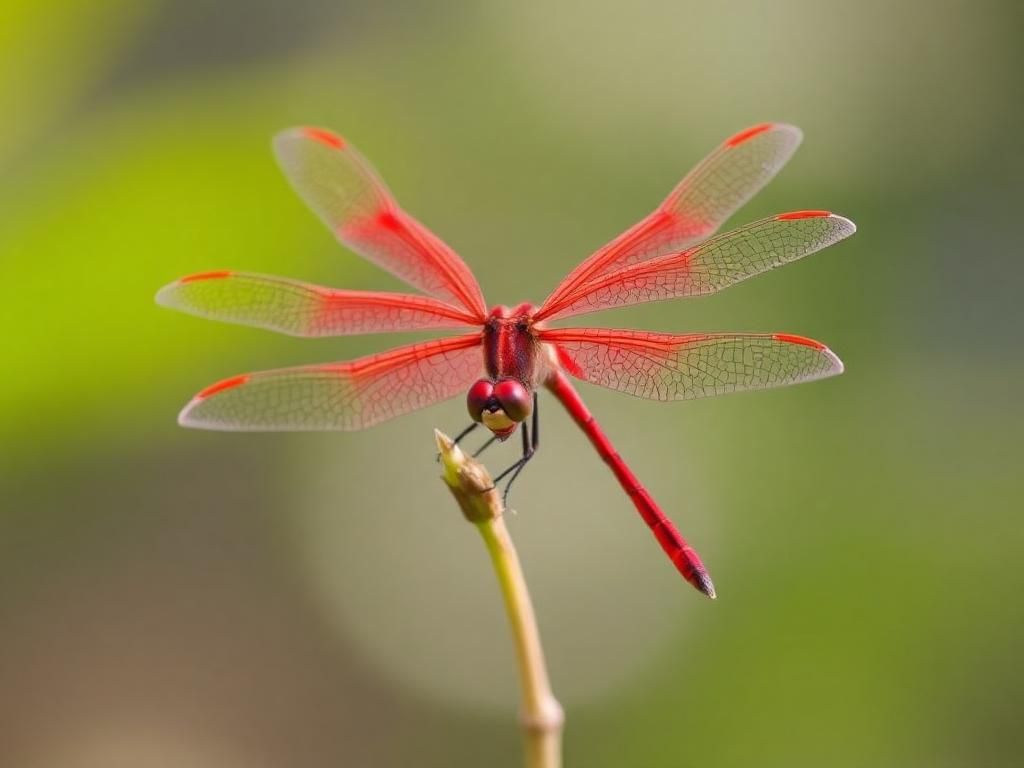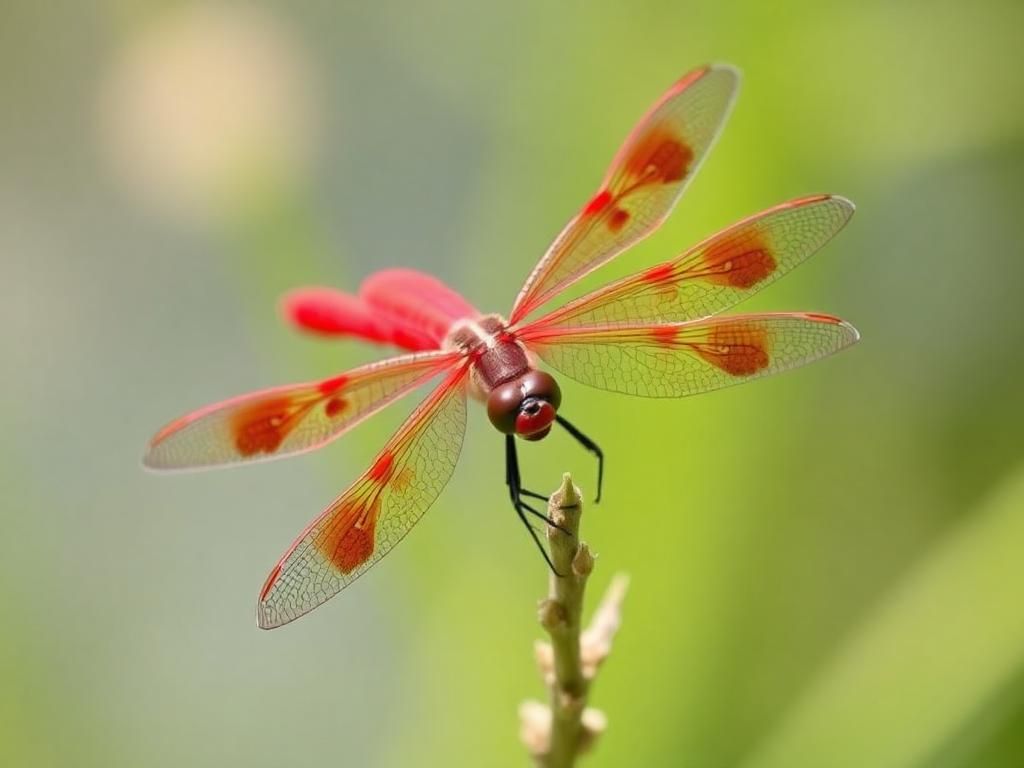Red dragonflies are some of the most captivating insects found in nature, known for their striking vibrant colors and agility. These beautiful creatures belong to the order Odonata, which also includes their close relatives, the damselflies. With their unique adaptations and behaviors, red dragonflies play an essential role in maintaining the equilibrium of various ecosystems. This article delves into the different facets of red dragonflies, examining their characteristics, habitats, behaviors, and cultural significance while highlighting their importance in nature.
Overview of Dragonflies
Brief Definition of Dragonflies
Dragonflies are large, slender insects identifiable by their four long, transparent wings and elongated bodies. They are classified under the order Odonata, which is further divided into two suborders: Anisoptera (dragonflies) and Zygoptera (damselflies). Dragonflies are influential as both predators and prey within various ecosystems.
Importance of Dragonflies in Ecosystems
As effective predators, dragonflies help control populations of mosquitoes and other small insects, thereby aiding in maintaining the ecological balance. Additionally, they serve as food for various birds, amphibians, and other predators, making them integral to the food web.
Significance of Coloration
Explanation of the Red Color in Nature
The vibrant coloration seen in many species of dragonflies, particularly red ones, serves several essential functions. In nature, red often signifies warning or toxicity, although in the case of red dragonflies, it is mainly about attraction and mating motivations.
What Red Signifies in Dragonflies
In *red dragonflies*, the color primarily plays a role in courtship and signaling dominance among rivals. Males typically exhibit brighter colors, which are crucial for attracting females during mating rituals.
Types of Red Dragonflies
Common Species
Scarlet Skimmer (Crocothemis erythraea)
Description and features: The Scarlet Skimmer is recognized for its brilliant red body and distinctive yellow markings on its face.
Habitat and distribution: This species can be found near freshwater bodies like ponds, marshes, and lakes across Europe, Asia, and Africa.
Red-veined Dropwing (Trithemis arteriosa)
Description and features: The Red-veined Dropwing displays a striking red body and characteristic dark veining on its wings.
Habitat and distribution: Commonly found in sub-Saharan Africa, this species thrives in warm settings with ample vegetation.
Other Notable Species
– **Vermilion Darter (Ethemorpha mexicana)**: This small dragonfly possesses a vibrant red body and is typically found in southern environments of the U.S. and Mexico.
– **Ruby Meadowhawk (Sympetrum rubrum)**: A smaller species with a distinctive ruby hue, it is prevalent in North America, particularly near vegetated ponds.
Habitats and Distribution
Preferred Ecosystems
For red dragonflies, the choice of habitat is crucial for their survival. They generally prefer freshwater environments, including:
– **Freshwater Environments**: Rivers, streams, and lakes offer the necessary habitat for breeding and hunting.
– **Wetlands and Ponds**: These ecosystems provide rich biodiversity, which supports the prey that red dragonflies hunt.
– **Urban Settings**: Surprisingly, red dragonflies can thrive in urban areas, where artificial ponds often become suitable habitats.

Global Distribution
Red dragonflies are distributed across various regions globally, including:
– **Regions where red dragonflies are commonly found**: They are prevalent in temperate and tropical regions.
– **Seasonal Variations and Migration Patterns**: Some species exhibit migratory behaviors, relocating seasonally to adapt to climatic changes and breeding requirements.
Biology and Behavior
Physical Characteristics
Size and wingspan can vary across species. However, many red dragonflies share common traits:
– Adult size typically ranges from 30 mm to 90 mm in length.
– Wingspan varies significantly, with many species reaching up to 100 mm across.
Distinctive coloration and patterns contribute to their visibility and create opportunities for communication and mating.
Life Cycle
The life cycle of red dragonflies consists of three critical stages:
– **Egg**: Laid in or near water, the eggs hatch into nymphs within a few weeks.
– **Nymph**: These aquatic larvae can last from several months up to a few years, depending on environmental conditions.
– **Adult**: After completing its metamorphosis, the adult emerges, capable of flight and fulfilling its role in the ecosystem.
The duration of each stage varies by species and environmental factors.
Feeding Habits
Red dragonflies are formidable hunters with a diet primarily consisting of other insects, such as mosquitoes, flies, and bees. Their hunting strategies include:
– Agile flying and quick reflexes to capture prey mid-air.
– Staying vigilant and camouflaged to ambush unsuspecting insects.
This predatory behavior significantly impacts local insect populations, showcasing the ecological role of red dragonflies.
Mating Behavior
Mating among red dragonflies includes:
– **Courtship Rituals**: Male dragonflies engage in aerial displays to attract females. These may involve intricate flying patterns and showcasing their colors.
– **Nesting and Oviposition**: Once a female accepts a male, they copulate and seek suitable water bodies to lay eggs, ensuring a safe environment for their offspring.
Ecological Role
Predator and Prey Dynamics
As predators, red dragonflies significantly contribute to controlling insect populations. They serve as a natural deterrent to pests like mosquitoes, providing a form of biological pest control essential for maintaining local ecosystems.
Biodiversity Indicators
Red dragonflies are often considered bioindicators, reflecting the health of aquatic ecosystems. Their presence signifies a balanced ecosystem, with their sensitivity to environmental changes serving as an alert to potential ecological issues, such as pollution.
Cultural Significance
Symbolism in Various Cultures
Across different cultures, red dragonflies have emerged as powerful symbols and figures in folklore:
– In Japan, dragonflies are seen as heralds of summer and symbolize courage and strength.
– Artistic representations often depict red dragonflies in various forms, symbolizing transformation and change.

Conservation Status
Despite their ecological importance, red dragonflies face several threats:
– **Threats to Red Dragonfly Populations**: Habitat destruction, pollution, and climate change pose significant risks to their survival.
– **Conservation Efforts**: Initiatives to protect wetland ecosystems and promote biodiversity are vital to the preservation of red dragonfly populations. Collaborative efforts among environmental organizations can enhance the awareness and importance of conservation work.
Observation and Photography
Spotting Red Dragonflies
To observe red dragonflies, follow these tips:
– **Best Times and Places for Viewing**: Early morning and late afternoon are optimal times as they are most active. Visit local ponds, marshes, or wetlands during warm months.
– **Tips for Identifying Species in the Field**: Look for their distinctive color patterns, wing shapes, and flight styles. Using a field guide can assist in correctly identifying various species.
Photography Tips
Capturing stunning photographs of red dragonflies can be rewarding. Consider the following:
– **Techniques for Capturing Dragonflies in Flight**: Use a fast shutter speed to freeze their movements, and practice patience to anticipate their flight paths.
– **Equipment Recommendations**: A DSLR or mirrorless camera with a macro lens will allow you to get up close while maintaining clarity and detail. A tripod may also help stabilize your shots.
| Species | Description | Habitat | Distribution |
|---|---|---|---|
| Scarlet Skimmer | Brilliant red with yellow markings | Freshwater bodies | Europe, Asia, Africa |
| Red-veined Dropwing | Red body with dark wing veins | Vegetated warm areas | Sub-Saharan Africa |
| Vermilion Darter | Small with bright red coloration | Sandy areas near water | U.S., Mexico |
| Ruby Meadowhawk | Distinguished ruby color | Vegetated ponds | North America |
FAQ
1. What are the main types of red dragonflies?
Common types include the Scarlet Skimmer, Red-veined Dropwing, Vermilion Darter, and Ruby Meadowhawk.
2. Where can red dragonflies typically be found?
They are most commonly found near freshwater habitats such as ponds and marshes globally, especially in temperate and tropical areas.
3. How do red dragonflies contribute to the ecosystem?
They act as critical predators of pests like mosquitoes, thus helping control insect populations and maintaining ecological balance.
4. What is the life cycle of a red dragonfly?
The life cycle includes three stages: egg, nymph, and adult, with varying durations influenced by species and environmental conditions.
5. Why are red dragonflies considered bioindicators?
They reflect the health of aquatic ecosystems and are sensitive to environmental changes, making their presence significant for ecological assessments.
6. How can I attract red dragonflies to my garden?
Creating a water garden with native plants and maintaining a balanced ecosystem will attract red dragonflies to your space.
7. What threats do red dragonflies face today?
Habitat destruction, pollution, and climate change are major threats impacting red dragonfly populations.
8. How can I help conserve red dragonfly populations?
Participating in local conservation efforts, supporting wetland preservation projects, and raising awareness are excellent ways to contribute.
9. What is the best time to observe red dragonflies?
The best times are early morning and late afternoon during warm months when they are most active.
10. Can red dragonflies be kept as pets?
Red dragonflies cannot be domesticated and are best appreciated in their natural habitats for the benefit of ecosystems.
Red dragonflies are not just picturesque; their biological roles, adaptation strategies, and cultural significance render them vital to our understanding of nature and its intricate web of life. By engaging in conservation efforts and being keen observers, we can cherish and protect these remarkable insects for generations to come.
